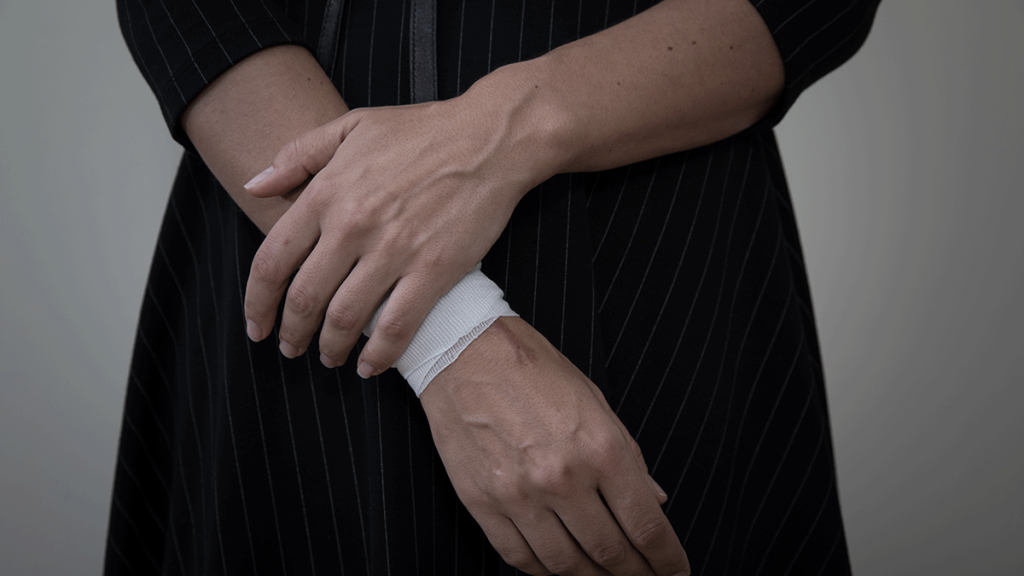Is Self-Harm Addictive?

Self-harm is one of the most misunderstood behaviors among teens and young adults. While it’s often associated with emotional pain, trauma, or mental health struggles, many people wonder — is self-harm addictive? The short answer is yes, self-harm can take on an addictive pattern that feels nearly impossible to stop without help.
At The Meadowglade, a leading adolescent treatment center in Moorpark, California, we often work with individuals who engage in self-harming behaviors like cutting, burning, or scratching. These actions can become a coping mechanism — a way to manage overwhelming emotions or gain a temporary sense of control. Over time, however, the brain begins to associate self-harm with relief or release, creating a cycle that resembles addiction.
To understand why self-harm can feel so compulsive, it’s important to look at the psychological and biological factors that reinforce the behavior — and what real recovery looks like.
What Is Self-Harm?
Self-harm refers to the intentional act of injuring oneself as a way to cope with emotional distress, trauma, or internal pain. It’s not usually a suicide attempt but rather a method of expressing feelings that feel too heavy or difficult to communicate.
Some common forms of self-harm include:
- Cutting or scratching the skin
- Burning or hitting oneself
- Picking at wounds or scabs
- Hair-pulling (trichotillomania)
- Ingesting harmful substances
While these behaviors may bring a brief sense of relief, they’re often followed by guilt, shame, or fear. This creates a powerful emotional loop — one that reinforces the very distress that led to the behavior in the first place.
How Self-Harm Becomes Addictive
Although self-harm doesn’t involve substances like drugs or alcohol, it can activate the same brain regions responsible for pleasure and pain regulation. When someone self-harms, the body releases endorphins and dopamine, the brain’s natural “feel-good” chemicals. This rush can momentarily numb emotional pain and provide a sense of calm or euphoria.
Over time, the brain begins to crave this relief. When emotional distress returns, self-harm feels like the fastest way to achieve that same chemical response. This neurological pattern is what makes self-harm feel addictive.
In fact, the cycle often mirrors addiction to substances:
- Emotional Trigger – Feelings of sadness, anger, or anxiety arise.
- Urge to Self-Harm – The person feels drawn to relieve the tension.
- Act of Self-Harm – Engaging in the behavior leads to temporary relief.
- Aftermath – Feelings of guilt or shame return, increasing distress.
- Repetition – The person repeats the behavior to escape these emotions.
This vicious cycle reinforces itself until the person feels trapped — unable to stop even if they desperately want to.
Psychological and Emotional Drivers
Self-harm often develops in response to deep emotional pain, trauma, or a lack of healthy coping mechanisms. For many teens, it becomes a silent language — a way to communicate pain they don’t yet have words for.
Some common psychological factors that can lead to self-harming behaviors include:
- Depression or anxiety disorders
- Post-traumatic stress disorder (PTSD)
- Borderline personality disorder (BPD)
- Low self-esteem or self-loathing
- Perfectionism and chronic stress
Teens who self-harm may also struggle with feelings of emptiness, isolation, or being misunderstood. In some cases, the physical pain of self-harm becomes a distraction from emotional suffering. Unfortunately, this creates a pattern that’s hard to break without professional support.
The Biological Side of Self-Harm Addiction
Just like substance addiction, self-harm can change how the brain responds to stress and reward. When someone self-injures, the release of endorphins dulls both emotional and physical pain. Over time, the brain begins to associate self-harm with relief — leading to a tolerance effect, where the individual may feel the need to harm themselves more frequently or severely to achieve the same sense of calm.
This biochemical process explains why self-harm is not simply “a phase” or an attention-seeking act. It’s a neurological and emotional pattern that requires compassionate, evidence-based treatment to heal.
Breaking the Cycle: Treatment and Healing
At The Meadowglade, we approach self-harm with the understanding that it’s a symptom of deeper emotional distress — not the root problem. Our goal is to help adolescents identify what’s driving the behavior and develop healthier coping mechanisms to replace it.
Our integrated treatment programs blend traditional therapies with holistic approaches that nurture the mind, body, and spirit. Some of our evidence-based modalities include:
- Cognitive Behavioral Therapy (CBT): Helps teens identify harmful thought patterns and replace them with healthier responses.
- Dialectical Behavior Therapy (DBT): Teaches emotional regulation, distress tolerance, and mindfulness — particularly effective for self-harming behaviors.
- Art and Expressive Therapies: Provides safe outlets for emotional release and self-expression.
- Family Therapy: Helps rebuild communication and trust between teens and their loved ones.
- Mindfulness and Movement Practices: Encourages grounding techniques such as yoga, meditation, and guided breathing to manage emotional triggers.
Our serene environment in Moorpark, California, offers a safe space for reflection and recovery — surrounded by nature, with the resources and clinical expertise to support lasting change.
Can You Fully Recover from Self-Harm?
Yes — recovery from self-harm is absolutely possible. While urges may still arise at times, learning new coping strategies, building emotional awareness, and finding supportive relationships can lead to freedom from self-destructive patterns.
At The Meadowglade, we’ve seen countless young people regain control over their lives. With the right treatment, they not only stop self-harming but also learn how to process their emotions in healthier, more constructive ways.
Healing doesn’t mean never feeling pain again — it means having the tools to face that pain without resorting to self-destruction.
How to Support Someone Who Self-Harms
Beyond the visible clutter, hoarding takes a heavy emotional toll. Many individuals experience:
- Shame and embarrassment about their home
- Isolation from friends and family
- Anxiety or panic at the thought of discarding items
- Strained relationships due to frustration or safety concerns
Understanding these emotional layers is key to approaching loved ones with empathy rather than judgment.
How Families Can Help a Loved One
If you suspect a friend or loved one is self-harming, it’s important to approach them with compassion, not judgment. Here’s how you can help:
- Listen without interrupting or criticizing.
- Avoid guilt-tripping or minimizing their pain.
- Encourage professional help, such as therapy or residential treatment.
- Be patient. Recovery takes time and relapses can happen.
- Stay connected. Consistent support can make all the difference.
Sometimes, simply showing that you care can open the door for someone to seek the help they need.
Contact Us for Support
If you or someone you love is struggling with self-harm, you’re not alone — and recovery is within reach. The cycle of pain and relief can feel endless, but with the right care, healing is possible.
At The Meadowglade, our compassionate team specializes in helping adolescents break free from self-harming behaviors and rediscover their sense of self-worth. Through personalized treatment plans and holistic healing experiences, we guide teens toward emotional stability and lasting recovery. You don’t have to face this alone — hope and healing begin here.
